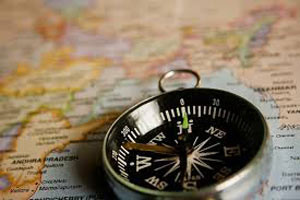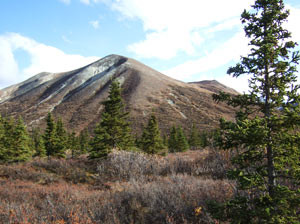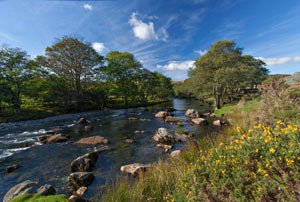
This section on wilderness navigation in a survival situation is going to be pretty short.
There are two reasons why…
First, I don’t know much about wilderness navigation.
I’ve never had to. I simply wander the woods until I find a place that looks good to settle in for a week or a month and plant myself there.
If you’ve looked around my site at all, you know that I’ve done everything that I talk about. I don’t tell you about things I’ve read in books, seen online, or heard about. I only tell you about things that I’ve actually DONE.
That’s because A LOT of what I’ve read in books and online is just plain WRONG.
What happens is that someone writes something in a book and the next author just re-writes the same thing WITHOUT TESTING IT. (I see this all the time, and not just in survival skills.)
Let me give you an example…
I hear all the time that you have to have certain woods to start fires with. The wood can’t be too hard or too soft. The wood for the fireboard and spindle have to be about the same hardness. And there can’t be any pitch or resin in the wood.
I’ve read one of those things in just about every single outdoor skills book I’ve ever read.
And none of that is true.

Way back when, maybe when there were still dinosaurs roaming the earth for all I know, someone wrote each of those statements in a book. And rather than ACTUALLY TESTING each of those things, the next author simply regurgitated the same garbage.
Because if any of those authors actually got off their typewriters and tested those things, they would have known that they weren’t true.
I can tell you from practical, real life experience that each of those statements is false.
I’ve started fires using rock hard oak with super soft basswood. I’ve started fires with the hardest oak on the hardest oak. I’ve started fires with soft, almost balsa-like tropical wood on almost balsa-like tropical wood. I’ve started fires with pine thick with resin and pitch.
And if any of the “experts” writing those books and talking about stuff they’ve never tested had actually DONE what they write about, they would have known that the authors before them were wrong.
But they didn’t test it. None of them did. So we end up with lies upon untested lies being told over and over again.
I’m not going to be guilty of that.
So, I’m not going to read about navigation somewhere else and write it here. Because I don’t know if what I’d be telling you was even true.

Reason Number Two:
There’s another reason I hesitate to write about wilderness navigation….
From what I’ve read about tragedies in survival situations, and the best of that comes from an excellent book called Deep Survival, it’s usually a good idea to just stay put.
Many true survival situations get a whole lot worse when people start trying to walk their way out. They leave the search area. They wear themselves out. They get truly lost. They get disorientated. They panic. They use up precious energy reserves. They get injured. They leave themselves open to more opportunities to make poor decisions.
Totally by accident, I’ve developed a set of skills that gives me the best chance for rescue. I stay put in a true survival situation.

I find an area that meets my needs. Then I build a shelter, get some water and make a fire. And then just wait there until I’m found… if I want to be.
Now, none of what I’ve written here means that you shouldn’t learn about wilderness navigation. I’m sure there are reputable authors and instructors to learn from. And if you happen to find a book or person who knows what they’re talking about, please let me know. It wouldn’t hurt me to know how to navigate in the wilderness, I just want to learn from someone with real-life experience and not some guy who pretends to know what he’s doing because he has a website and videos.
Learn wilderness survivals skills that I’ve done in real life.
